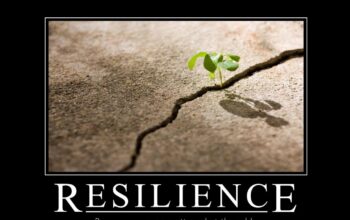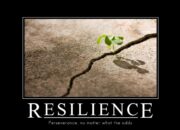In an unpredictable world, the pursuit of security and peace of mind is a universal human desire. While we can’t foresee every challenge, we can strategically prepare for them. This proactive approach to managing risks and protecting our well-being and assets is precisely what the concept of safeguarding your future entails. It’s about building a robust financial and personal shield that allows you to navigate life’s uncertainties with confidence, ensuring that unforeseen events don’t derail your aspirations. This article delves deep into the multifaceted strategies for securing your tomorrow, exploring key areas of protection, modern approaches to risk management, the profound benefits of a well-fortified future, and the evolving landscape of personal and financial safeguards.
The Imperative of Proactive Protection
Life is a journey punctuated by both planned events and unexpected turns. From minor inconveniences to major life-altering incidents, risks are an inherent part of existence. Without adequate preparation, these risks can translate into significant financial burdens, emotional distress, and shattered dreams. Proactive protection isn’t about fearing the future; it’s about empowering yourself to face it.
Consider these common scenarios that underscore the need for safeguarding:
A. Medical Emergencies: A sudden illness or accident can lead to astronomical medical bills, potentially wiping out savings or accumulating crippling debt. B. Loss of Income: Job loss, disability, or critical illness can interrupt your ability to earn, impacting your family’s livelihood and financial stability. C. Property Damage: Natural disasters (floods, earthquakes), fires, or theft can destroy homes, vehicles, or valuable possessions, requiring substantial funds for repair or replacement. D. Legal Liabilities: An accident you cause, or a professional mistake, could result in costly lawsuits and legal fees. E. Longevity Risk: Living longer than expected can be a blessing, but it also means needing sufficient funds to sustain your lifestyle through an extended retirement.
These examples highlight why simply hoping for the best isn’t a viable strategy. Instead, a thoughtful, layered approach to protection becomes indispensable.
Core Pillars of Future Safeguarding
Building a secure future involves multiple interconnected layers of protection, each addressing specific types of risks.
A. Health and Wellness Protection
Your health is your most valuable asset. Protecting it, and the financial implications of healthcare, is paramount.
- Health Coverage (Medical Benefits):
- Comprehensive Plans: Essential for covering doctor visits, prescriptions, hospital stays, and specialized treatments. Understanding deductibles, co-pays, and out-of-pocket maximums is crucial.
- Specialized Benefits: Consider dental, vision, and mental health coverage as integral parts of holistic health protection.
- Critical Illness Protection: Provides a lump-sum payment upon diagnosis of a specified critical illness (e.g., cancer, heart attack, stroke), allowing you to focus on recovery without immediate financial stress. This differs from regular medical benefits, which cover treatment costs.
- Disability Income Protection:
- Short-Term Coverage: Replaces a portion of your income for a limited period (e.g., 3-6 months) if you’re temporarily unable to work due to illness or injury.
- Long-Term Coverage: Steps in when short-term benefits expire, providing income replacement for an extended period, potentially even to retirement age, in case of severe or permanent disability. This is crucial as a long-term disability can be financially devastating, often more so than death, as expenses continue while income ceases.
- Long-Term Care Provisions:
- Future Care Planning: As life expectancies increase, so does the likelihood of needing assistance with daily activities (e.g., bathing, dressing) due to aging, chronic illness, or disability. This can occur at home, in assisted living facilities, or nursing homes.
- Cost Management: Such care is extremely expensive and typically not covered by standard health plans. Long-term care provisions (through dedicated plans or self-funding strategies) protect your assets from being depleted by these costs.
B. Life’s Financial Security
Protecting your loved ones’ financial well-being is a fundamental aspect of safeguarding your future.
- Life Coverage (Security for Dependents):
- Term Policies: Provides coverage for a specific period (e.g., 10, 20, 30 years) and pays a death benefit if the insured passes away within that term. It’s generally more affordable and suitable for covering specific financial obligations like mortgages or childcare during peak earning years.
- Permanent Policies (Whole Life, Universal Life): Offers lifelong coverage and often includes a cash value component that grows over time, which can be borrowed against or withdrawn. These policies are more complex and typically more expensive but offer unique estate planning and wealth accumulation benefits.
- Purpose: Ensures your family can cover living expenses, debts, education costs, and maintain their lifestyle if you’re no longer there to provide for them.
- Income Protection Strategies:
- Emergency Funds: A foundational element, providing 3-6 months (or more) of living expenses in an easily accessible account to cover unexpected job loss, large medical deductibles, or other short-term financial shocks.
- Diversified Investments: Spreading investments across different asset classes (stocks, bonds, real estate) reduces risk and helps grow wealth over time, creating multiple streams of passive income or capital for future needs.
- Skill Development: Continuously learning new skills or enhancing existing ones makes you more adaptable and valuable in the job market, reducing the risk of long-term unemployment.
C. Asset and Property Defense
Protecting your physical assets from damage, loss, or liability is crucial for financial stability.
- Homeowners/Renters Provisions:
- Structural and Contents Coverage: Protects your dwelling and personal belongings from perils like fire, theft, vandalism, and certain natural disasters.
- Liability Coverage: Crucial for protecting you financially if someone is injured on your property and you’re found liable.
- Automobile Provisions:
- Liability Coverage: Legally required in most places, this protects you if you cause an accident resulting in injury or property damage to others.
- Collision and Comprehensive Coverage: Protects your vehicle from damage due to accidents (collision) or non-collision events like theft, vandalism, or natural disasters (comprehensive).
- Uninsured/Underinsured Motorist Coverage: Protects you if you’re involved in an accident with a driver who has insufficient or no coverage.
- Other Valuables Protection:
- Scheduled Personal Property: For high-value items like jewelry, art, or collectibles, standard home policies often have limits. A separate rider or policy can provide comprehensive coverage.
- Umbrella Liability Protection: Provides an extra layer of liability coverage beyond what your home and auto policies offer. This is particularly important for individuals with significant assets, protecting them from large lawsuits.
D. Retirement and Legacy Planning
Safeguarding your future also means planning for a comfortable post-work life and ensuring your legacy.
- Retirement Savings Programs:
- Employer-Sponsored Plans (e.g., 401(k), 403(b)): Offer tax advantages and often employer matching contributions, making them powerful vehicles for long-term growth.
- Individual Retirement Accounts (IRAs): Provide tax-advantaged savings options for retirement, even if you have an employer plan.
- Pension Plans: While less common today, traditional defined-benefit pension plans offer guaranteed income in retirement.
- Diversification: A balanced portfolio, adjusted over time, is key to managing risk and growth throughout your working life and into retirement.
- Estate Distribution Preparations:
- Wills: Legally document how your assets should be distributed after your death, ensuring your wishes are followed.
- Trusts: Can provide greater control over how and when assets are distributed, offer privacy, and potentially reduce estate taxes.
- Power of Attorney: Designates someone to make financial and/or healthcare decisions on your behalf if you become incapacitated.
- Beneficiary Designations: For life policies and retirement accounts, ensure beneficiaries are updated to reflect your current wishes, as these supersede wills.
Modern Approaches to Risk Management
The world of protection is constantly evolving, with new technologies and philosophies shaping how we safeguard our futures.
A. Digital Security and Cyber Defense
In our increasingly interconnected world, digital assets and personal data are major vulnerabilities.
- Cybersecurity Measures:
- Strong Passwords and Multi-Factor Authentication (MFA): Essential first lines of defense against unauthorized access to accounts.
- Antivirus and Anti-Malware Software: Protects devices from malicious software.
- Regular Software Updates: Patches vulnerabilities that hackers exploit.
- Virtual Private Networks (VPNs): Encrypt internet traffic, especially on public Wi-Fi.
- Identity Theft Protection:
- Credit Monitoring Services: Alert you to suspicious activity on your credit reports.
- Data Breach Monitoring: Services that scan the dark web for your personal information following data breaches.
- Cyber Protection Plans: Some specialized policies offer financial reimbursement for identity theft recovery costs, legal fees, and even ransom demands.
- Privacy Awareness: Understanding how your data is collected and used online, and taking steps to limit its exposure.
B. Proactive Wellness and Preventative Measures
Beyond financial safety nets, actively managing risks through lifestyle choices is becoming more emphasized.
- Healthy Living: Regular exercise, balanced nutrition, and sufficient sleep are fundamental preventative measures against many health issues, reducing reliance on healthcare services in the long run.
- Regular Health Screenings: Early detection of diseases significantly improves treatment outcomes and can prevent minor issues from becoming major health crises.
- Stress Management: Chronic stress can lead to various health problems. Incorporating stress-reducing practices (e.g., meditation, hobbies) contributes to long-term well-being.
- Home Safety Audits: Regularly checking smoke detectors, carbon monoxide alarms, and ensuring electrical safety can prevent fires and other household accidents.
- Defensive Driving: Practicing safe driving habits reduces the likelihood of accidents, protecting both lives and assets.
C. Leveraging Technology for Protection
Technology isn’t just a vulnerability; it’s a powerful tool for enhanced safeguarding.
- Smart Home Security Systems: Connected devices (cameras, sensors, smart locks) provide real-time monitoring and alerts for intrusions, fires, or leaks, often with remote access.
- Wearable Health Devices: Smartwatches and fitness trackers can monitor vital signs, detect irregularities, and even alert emergency services in case of a fall or critical health event.
- Telematics in Auto Protection: Devices that monitor driving behavior (speed, braking, mileage) can lead to personalized auto rates based on safe driving habits.
- AI-Powered Risk Assessment: Insurers are increasingly using AI and big data analytics to offer more tailored protection plans and fairer pricing based on individual risk profiles.
- Blockchain for Security: Emerging applications of blockchain technology promise more secure and transparent record-keeping for policies, claims, and identity verification.
The Profound Benefits of a Fortified Future
Investing time and resources into safeguarding your future yields a multitude of profound benefits that extend far beyond mere financial security.
A. Unshakeable Peace of Mind
This is perhaps the most invaluable benefit. Knowing that you’ve put safeguards in place for potential adversities allows you to:
- Reduce Anxiety: Less worry about “what if” scenarios, enabling you to focus on living your life fully.
- Sleep Better: A sense of preparedness alleviates the stress associated with uncertainty.
- Live More Fully: With reduced fear of financial ruin from unexpected events, you’re more likely to pursue opportunities, take calculated risks, and enjoy experiences.
B. Financial Resilience and Stability
A well-protected future means your financial foundations are robust enough to withstand shocks.
- Asset Preservation: Your savings, investments, and property are shielded from being depleted by unforeseen expenses.
- Debt Avoidance: Protection mechanisms like disability benefits or adequate medical coverage prevent the accumulation of crippling debt.
- Consistent Progress: Financial setbacks are less likely to derail your long-term goals, allowing you to stay on track with savings, investments, and wealth accumulation.
C. Empowered Decision-Making
When you’re financially secure and protected, you gain greater autonomy.
- Freedom of Choice: You have the flexibility to make career changes, pursue education, or take calculated risks without the looming fear of immediate financial collapse.
- Reduced Stress: Decisions are made from a position of strength, not desperation, leading to more rational and beneficial outcomes.
- Better Negotiation Power: Your financial stability allows you to negotiate from a stronger position in various aspects of life.
D. Legacy and Family Well-being
Safeguarding your future inherently protects those you care about most.
- Protection for Dependents: Ensures your children’s education is funded, and your spouse’s living expenses are covered, even if you’re not there.
- Reduced Burden: Prevents your loved ones from incurring financial burdens due to your health crises or end-of-life expenses.
- Smooth Transitions: Thoughtful estate planning ensures a smooth transfer of assets, minimizing family disputes and legal complexities during difficult times.
- Intergenerational Wealth Transfer: Proper planning can help preserve and grow wealth across generations, providing a foundation for your descendants.
E. Enhanced Quality of Life
Ultimately, a safeguarded future contributes to a higher quality of life.
- Access to Quality Care: Adequate health protection ensures you can afford the best medical treatments when needed.
- Comfort in Retirement: Robust retirement planning allows you to enjoy your golden years without financial strain, pursuing hobbies and interests.
- Freedom from Worry: The ability to focus on personal growth, relationships, and experiences rather than constant financial anxiety.
The Evolving Landscape of Protection
The world is constantly changing, and so too are the risks we face and the ways we protect against them. Staying informed and adaptable is key.
A. Personalized and On-Demand Coverage
The trend is moving away from one-size-fits-all policies towards highly customized protection.
- Usage-Based Models: For auto protection, telematics devices can offer premiums based on actual driving behavior (miles driven, safe habits).
- Parametric Coverage: Pays out a pre-agreed amount based on a specific trigger event (e.g., hurricane hitting a certain wind speed, earthquake exceeding a certain magnitude), simplifying claims.
- Micro-Protection: Shorter-term, highly specific coverage for particular events or assets (e.g., temporary travel, a single high-value item for a short period), often accessed via apps.
B. Proactive Risk Mitigation Services
Many providers are shifting from simply paying claims to actively helping clients mitigate risks.
- Wellness Programs: Health providers offering incentives for healthy lifestyle choices, or tools for preventative care.
- Cybersecurity Assistance: Cyber protection plans often include services like dark web monitoring, identity theft resolution specialists, and data recovery assistance.
- Smart Home Integration: Partnerships between home protection providers and smart home device manufacturers to offer discounts or services for enhanced security.
C. Digital Transformation of Services
The entire process of obtaining and managing protection is becoming increasingly digital.
- Online Quotes and Enrollment: Streamlined processes for comparing and purchasing protection plans online.
- Mobile Apps: For managing policies, filing claims, accessing digital IDs, and communicating with providers.
- AI-Powered Customer Service: Chatbots and AI assistants for instant answers to common questions and simplified claims processing.
D. Focus on Climate and Environmental Risks
As climate change intensifies, the protection industry is adapting to new and escalating environmental risks.
- New Peril Coverages: Developing policies that specifically address emerging climate risks like wildfires, extreme heat, or unique flood patterns.
- Resilience Incentives: Offering discounts or support for homeowners who invest in climate-resilient construction or mitigation measures.
- Data-Driven Risk Assessment: Using advanced climate modeling and geographical data to more accurately assess and price environmental risks.
E. Blended Financial Planning
The lines between different financial services are blurring. Comprehensive financial advisors increasingly integrate protection strategies (health, life, disability) directly into broader wealth management and retirement planning, ensuring a holistic approach to securing your financial future.
Conclusion
To safeguard your future today is to embark on a continuous journey of strategic planning, thoughtful preparation, and informed decision-making. It’s about constructing a multi-layered defense system for your well-being, your finances, and your loved ones against the inevitable uncertainties of life. From fundamental health and financial protections to robust asset defense and forward-looking retirement and legacy planning, every step taken to fortify your future contributes to a profound sense of peace of mind and financial resilience.
In an era of rapid change, the tools and strategies for protection are evolving just as quickly, empowered by technology and a growing understanding of risk. By embracing modern approaches to digital security, leveraging smart technologies, and prioritizing proactive wellness, individuals can build an even more robust shield. The benefits extend far beyond monetary gain, encompassing empowered decision-making, enhanced quality of life, and the invaluable assurance that your legacy and the well-being of your family are secure. Taking action today to build this comprehensive safety net is not just a smart financial move; it’s an investment in a calmer, more confident, and ultimately, more fulfilling tomorrow.










